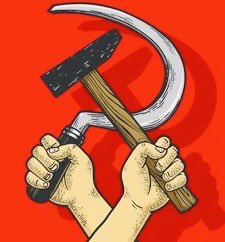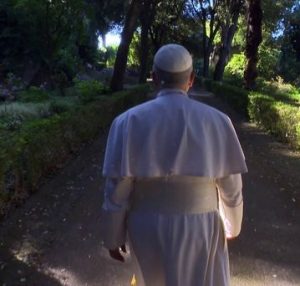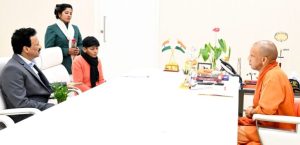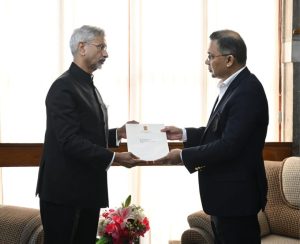PVTG Bonda Tribe of Odisha Prides in Independent & Stubborn Spirits

Bonda Tribe of Malkangiri in Odisha. Image credit PK Panda
Glimpses of Life of Malkangiri’s Bonda Tribe of Odisha
By Pradeep Kumar Panda
Bhubaneswar, November 11: In the wild and remote mountainous country located towards the south-western tip of the Malkangiri highlands and north west of the river Machkund in Malkangiri district, lives a unique tribe noted for its fiercely independent spirit. The tribesmen identify themselves as ‘Remo’ (man).
Their neighbours call them “Bonda”. Found nowhere else except in those 32 villages confined to 130 sq. km. of hill area in the Khairput Block, the Bonda tribe as a whole represents a little changed particular vulnerable tribal group (PVTG) with distinctive features of its culture, chiefly due to its geographical isolation, and more perhaps due to its stubborn and independent spirit.
Bonda speak a language of their own that belongs to the Austro-Asiatic (South Munda) language group. Yet the tribesmen exhibit great differences in appearance, customs and character from their brother group belonging to the same language group.
Also Read: Measuring cyclonic storm Dana havoc in Odisha, West Bengal
Some of the most striking features of the tribes are:
- Spirit of independence and sense of freedom
- Rude and ruthless manner of expression
- Dormitory organisation
- Excessive addiction to palm wine
- Unconventional dress pattern
Bonda men are brave and bold. They derive their identity from their arms, such as bow, arrows, long knife which they always carry and sago palm-wine which their most favourite drink. They often become violent under the intoxicating effects of such drinks.
The Bonda women with their clean-shaven head decorated with head bands of palmyra strips and plaited fillets of caryota fiber stand out in sharp contrast with women of other tribal groups having long hairs arranged in attractive buns.
Also Read: Spatial mapping key to spur renewable power in Odisha
Mass of coloured beads and shell strings, brass neck rings and necklaces hanging down even below the navel and the brass bangles covering the whole of the lower arms are the typical ornamentation of the Bondo women. A short and narrow strip of striped loin-cloth woven at home by a double-bar tensioned loom covering only the private parts comprises the women’s wear.
Location
In the remote highland country within mighty Kondakamberu ranges of Eastern Ghats rising on the eastern side of the Malkangiri district lives the brave and beautiful human race called “Bonda”. Hardy highlanders as they are, they sparsely inhabit the upland towards north-west of the river Machkund confined within the group of high hills named after them – The Bonda Hills. In the lap of the nature, amidst rolling hills and tropical forests, the Bonda habitat – a wild and picturesque territory rich in flora and fauna lies at about an altitude of 3000 ft above the sea level.
Identity
Their neighbours call them ‘Bonda’. Bu they say they are ‘Remo’ – the Man. Their unique style of personnel appearances distinguishes them from rest of the world. Bonda men wear a narrow strip of loin cloth (gosi). It is the women’s attire that is so remarkable. A taboo backed by legends prevents women against clothing themselves above the waist. They make up this very patent deficiency by wearing a mass of brass and bead necklaces and by large heavy circular collars (neck rings) of brass and aluminum.
Also Read: History on side of Odisha in battle for claims on rasagolla
These ornaments cover the breasts and hang down to the navel. The only short strip of loin cloth women wear is called ‘Nadi’ or ‘Ringa’. This is a striped and coarse coloured cloth of 3’ – 4’ x 1’ tied to the waist thread (thumiya). It barely covers their lower parts. Using their simplest and indigenous primitive loom, Bonda women weave this cloth themselves during their spare time out of natural kerang fiber applying vegetable dyes.
Bonda women look majestic in their unique and spectacular fashion of traditional adornments. Their traditional costumes consist of a large mass of necklaces of coloured beads, coins and cowries which adorn their shaven heads and hang down from neck to the naval totally covering their upper parts. Besides they wear a variety of ornaments, such as aluminium neck rings, ear rings, nose rings, finger and toe rings, bangles of grass and aluminium, mettalic anklets, head bands made of grass or beads, etc. They shave their heads and adorn it with coloured beads.
Population
The Bonda tribe lives in Odisha, Chhattisgarh, and Andhra Pradesh. According to the Census 2011, total population of the Bonda tribe is approximately 12,000.
Settlement
Hill Bonda settlements are situated on high level lands such as hill tops and hill slopes surrounded by bounties of nature. Access is difficult through zig-zag hilly tracks. The villages may be large and small. Large villages often have small hamlets around. Within the villages there are no regular streets and the houses are scattered adjacent to each other.
Also Read: Odisha remembers legendary Parala king Gajapati
The village meeting place – ‘Sindibor’ is built at a convenient location within the village. Girl’s dormitory house (Selani Dingo) exists either at the middle or at the end of the village. The shrine of Hundi, the village presiding deity is found at the entrance.
Patkhanda Mahaprabhu, the Creator and the Supreme God is represented by a long sword kept in a banyan tree in Mudulpada village. Perennial hill streams flowing close to the village are used as source of water. Little away from the village lies cremation ground.
Housing
The Bonda live in small-thatched huts. The walls are made of bamboo frame plastered with mud and cowdung. Walls may be painted with coloured earth. The roof is thatched with a kind of wild grass called ‘piri’. Now due to shortage of ‘piri’ some people are using tiles, tin or asbestos sheets. Some houses have a wide verandah in front or around. This serves the purpose of sleeping and gossiping.
This may be open or enclosed with mud walls. The entrance door is often made attractive by wood carving and wall colouring. The interior room in partitioned into sleeping-cum cooking and store. Domestic articles are scanty only to meet the bare necessities. There are a few earthen ware pots, bows and arrows, agricultural tools etc. The domestic animals like cows, billocks, buffaloes, goats, fowls etc are sheltered in separate sheds either attached to or little away from the house.
Some Bonda homesteads are enclosed within fences made of bamboo wattle. A kitchen garden (dinibui) is raised in the backyards on in the vicinity. Here fruit bearing trees, like jackfruit, mango, banana, guava, lemon etc are planted and a variety of seasonal vegetables are grown. It is protected by bamboo wattle fencing.
Routine Life
In the Bonda highlands, climate remains mild even during the summer. The Bonda get up early in the morning to start their daily routine life of struggle for existence. They rise before the sunrise to finish their morning works and get ready to toil hard outdoors for subsistence. Hard working Bonda women get up little earlier than men to attend to various domestic chores.
Also Read: Odisha plans first green ammonia plant by 2027
Virtually being the backbone of Bonda Society, they play a pivotal role in running their family. They shoulder a major part of the work load of the family, including child acre, plastering, cleaning and maintenance of the house, taking care of domestic animals, routine cleaning of the cattle sheds, cleaning of clothes and utensils, fetching of water and firewood, processing, cooking and serving of food, weaving ringa, making leaf plates and broomsticks, visiting weekly markets for sale, barter or purchase etc apart from undertaking routine subsistence works. Therefor their society respects them.
Finishing the household works, the Bonda men, women and children move out to work in their fields carrying their lunch with them. Bonda derive their subsistence out of shifting cultivation (Klunda or Donga chas) as well as settled cultivation (Jhola chas), wherever wetlands are available in the rugged and undulating terrain.
While working in the field, they take lunch brought from home. Sometimes, they cook food and eat there. By the afternoon, they come back home. Men climb the Salap (Sago Palm) tree to have a refreshing drink of Salap juice to which they are strongly addicted. Bonda men are aggressive by nature and they are skilled archer. They always go out with their arms, such as bow, arrows, knife and axe. Under intoxication, they become more aggressive and violent which often leads to homicide.
Reaching home form the field, women resume their routine household works. They take care of children, gather firewood for the kitchen to cook the evening meal. Bonda women work for their family from dawn to dusk. During leisure hours, they flock together to while away some time in chit-chatting. Among the Bonda, all people irrespective of age and sex work according to their capacity.
Children, old men and women do not sit idle. Those above 10 years of age help their parents in indoor and outdoor activities. They take care of their younger siblings during the absence of parents. In winter after the sunset people gather in the streets and sit around fire to get relief from cold.
During festive occasions and whenever they want, young men and women rejoice by dancing after wearing their gorgeous costumes. Their dances often performed during day and night. Others enjoy the show from a distance.
Livelihood
In the rugged terrains around their habitat, the Bonda toil hard to eke out their living. Primarily the Bonda are agriculturists. They practise shifting cultivation (klunda chas) extensively. Here, they grow cereals, pulses and oilseeds such as kangu, suan, jana, oat, black gram, maize. Niger etc. Irrigated and terrace paddy fields are used for cultivation of paddy by transplantation method.
In the Bonda area, one can notice perfect blending of swidden cultivation and settled cultivation, broadcasting and transplantation, mono-cropping and multi-cropping, which appear to be unique. In their kitchen gardens, they grow maize, tobacoo, fruits and vegetables. Their livelihood is supplemented by animal domestication and seasonal forest collections. The Bonda come down the hills in different week days to vist the weekly markets in the adjoining plains held at Mundiguda, Kudumulguma, Govindpally, Maithili, Lamtaput, Onkadely, Khairput, Panasput etc.
Also Read: Tourism surge in Odisha India’s best kept secret
Here they come in contact with the outside world. In weekly markets, they sale or barter their surplus agricultural produce, minor forest produce and brooms and procure their provisions. The market transactions are done mostly by Bonda women. Besides, they meet their friends and relatives from villages far and near and enjoy happy moments while relishing the taste of sweets and snacks from the food stalls. These markets sit during day time and before sun set, they return to their home in the distant mountainous areas.
Magico Religious Domain
The Bonda are polytheiests. They believe in the existence of a number of Gods and Spirits. They worship mostly the deities of nature, like the Patkhanda Maaparabhu – the Creator of universe, Hundi or Bursung – the Mother Earth and the village Goddess, Kapurchuan – the deity of stream, Dhartani – the deity of cowshed, Uga and Renungbor – the forest deities, Doliang – the spirit of mango tree, Kaliarani – the spirit of low-land paddy fields and Vinding Sagar – the spirit of musical drums.
The Village Priest – Sisa or Pujari performs worship of these deities on various occasions. Besides, there are many dreaded evil spirits. All of them, need to be kept in food humour through rituals and sacrifices. Gurumai – the Shaman, detects spirits causing sickness and other troubles with the help of rice divination, communicates with them in trance, and appeases them by performing rituals and sacrifices.
Social Control
The Bonda villages are traditionally autonomous. Social order is maintained by a set of traditional functionaries – Naik – the village chief, Challan – the organisor of village meetings and Barik – the village messenger. The Barik belongs to Dom caste. Naik is an elderly person of the village with knowledge and experience. He presides over the village council meetings ta Sindibor and adjudicates cases concerning village affairs. Cases violating social customs, traditions and conventions are brought to the assembly and decided. Punishment is given to the offender in accordance with gravity of the case.
Also Read: Odisha manages lowest debt burden with prudent fiscal management
Dance Traditions
In sharp contrast to their aggressiveness, the Bonda have finer aspects of life that finds expression in their age old tradition of dance and music. Grown up boys and girl become members of youth dormitory. They dance for themselves on different occasions wearing colourful dance costumes. While boys play musical instruments the girl holding bunch of peacock feathers dance to the tune.
Changing Scene
The Bonda no longer remain isolated in their remote mountainous abode. Winds of change have entered into their territory. They have been identified as one among 13 Particularly Vulnerable Tribal Groups (PVTG) of Odisha. The first Micro Project of Odisha named Bonda Development Agency is functioning at Mudulipada – the heart of Bonda country to bring about their all-round development.
It is effecting changes in their life style. Change in taking place in road links, housing, livelihood patterns, health and hygiene. Priority has been given to spread of education. Residential schools for boys and girls are running at Mudulipada. The Bonda have now gradually adopted the cultivation of wheat, potato, high yielding paddy, pulses, vegetables etc. Now it is up to them to decide as to how best they can derive maximum benefit out of development intervention and side by side replenish their socio-cultural identity.
(Opinions expressed in the article solely belong to the author)
Join WhatsApp channel of The Raisina Hills







